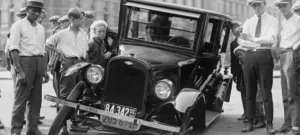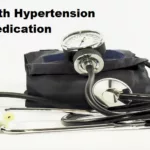There are millions of people who are injured every single year around the world thanks to car accidents. Yes, that’s right – millions of people. This means that the chances that you are going to find yourself having to help an accident victim on the road are much higher than you might think that they are. And that’s why it’s crucial that you know what to do whenever you find someone in the unfortunate situation of a car accident. Whether or not this accident was your fault or you just came across the situation while driving, you should keep reading down below to learn the steps you should take to help an accident victim.
1. Park Your Car to The Side of The Road
The first thing you need to determine is where the victim is in regards to the car accident. Are they in the middle of the road? Or are they in the car or outside the car on the side of the road? If the victim is in the middle of the road and you are the first responder on the scene, then go ahead and use your car as a barrier against other oncoming cars. This will ensure that no one gets through and makes the situation even worse.
If the victim and the car are on the side of the road, then go ahead and park your car on the side of the road. Make sure to turn on your emergency flashers so that other cars and the emergency services see that someone is wrong here. Even if your car isn’t running, the emergency flashers are going to stay on and warn the oncoming cars.
2. Be Sure to Remain as Calm as Possible
The next thing that you need to ensure is that you are calmed down and not panicking when you try to help the victim of a car accident. If you let your emotions get the best of you, then this is not going to help the victim because you won’t be able to think clearly. This could even make the situation even worse if you’re not careful.
Make sure to take a few deep breaths or do whatever you need to in order to calm down before you exit the car. It’s always a good idea to breath in and out for six counts before you head into any stressful situation. This is going to improve the oxygen flow to your brain and ensure that you are thinking carefully in this stressful situation.
3. Check the Scene Quickly
The next thing that you’re going to want to do is do a quick run-through of the scene of the accident. This is not only important to keep yourself safe, but you could find some information that will help out the emergency services whenever they come to the scene. Check out how many cars are involved, what victims there are, if there are any fires on the scene, if there are any gases that have been spilled, etc. When you take in this information, it’s going to ensure that you can take the proper steps to saving the victim.
4. Call Emergency Services ASAP
Once you have done a proper scan of the area, you should go ahead and call the emergency services to get them onto the scene as soon as possible. You can give the operator all of the information that you have and ask them what the best course of action is. This information that you got from scanning the scene of the accident will also help the emergency services to come prepared with what they need to help the victims, rather than coming in totally blind. If you don’t have a phone with you, then check and see if there are any other bystanders or drivers who have a phone you can use to call 911.
5. Try to Warn Oncoming Traffic as Much as Possible
You should ensure that you are warning oncoming traffic of the accident before they can pass by. You can either use a flare to warn other drivers that there is something wrong or you can have some people work as flagmen and keep traffic from going by or to alert them as they do. This is a crucial step to take as extra traffic around a car accident is never a good idea and will only make things worse.
6. Check for Any Danger
Next, once it’s time to approach the scene of the accident and check if the victims are OK and to provide assistance, you have to take the time to check for any danger. You never want to head into any accident scene without knowing what kind of dangers might be present. Check to see if there are any fires or gas spills that could put your life in danger, as well.
If there is nothing particularly wrong that could endanger your life, then you should go ahead and turn off the cars that were in the accident. This will ensure that nothing can go wrong with that.
7. Ask the Victim If They Need Assistance
The next thing you’re going to need to do is approach the victim(s) with caution. You never want to rush up to the victim because this could make them even more scared and panicked than they already are. You always want to ask them if they need assistance or not before you start providing any help. By doing this, you are abiding by Good Samaritan laws, which say that you shouldn’t provide help to anyone who rejects it. If they reject your help and then become unconscious, then you should use your best judgement about whether or not to provide them with assistance. The Good Samaritan laws are going to provide you support in this kind of situation.
8. Avoid Moving the Victim
You never know what kind of injuries someone could have whenever they’ve been the victim of a car accident. You should never be moving a victim because they could have internal injuries that could just become worse if you move them in any way, the myths prevailing regarding first aid might compel you to do so though. Make sure to keep the victim wherever they are, no matter whether that’s on the side of the road or in the middle of the road. Again, if the victim is in the middle of the road, then you should have stopped traffic in order to help them.
9. Check Their Airway and Administer Aid Where Necessary
If the victim is not breathing or there is something wrong with their airway, then this is something that you should focus on first. Make sure that they are breathing and if they are not, it might be time to provide CPR to get them breathing again.
If the victim that you are working with has some kind of life-threatening injury that requires immediate assistance, then it’s generally OK to provide some form of relief. For example, if they are bleeding a lot from an open wound, then be sure to press bandages or a t-shirt on the wound until emergency services can get there. If it’s just a simple wound that requires a splint or some stitches, it’s best to wait until the emergency service workers get there to help out.
There you have it! When you are working with someone who has been the victim of a car accident, then these are the steps that you’ve got to take. Keep these in mind and you’ll be prepared for the worst!








